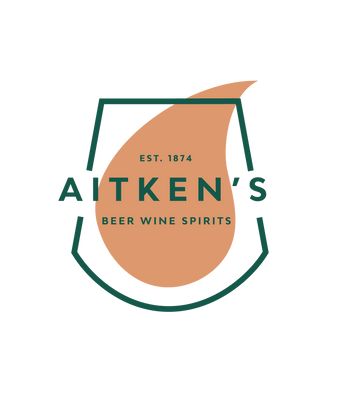Images are for illustrative purposes only and, unless clearly stated in the product title or description, labels and vintages may differ from those shown.
| Spirit | Aqua Vitae |
| Style | Dry, Spirit, Spice, Salted Caramel, Aniseed |
| Where's it from? | Lindores, Fife, Scotland |
| Volume | 70cl |
| ABV | 40% |
| Pairing/Garnish | The guys at Lindores have got some fantastic cocktail recipes. Check them out here. |
Through a fragrant piney aroma comes fleshy white fruit, salted caramel, sweet aniseed, fresh herbs and a rich medley of baking spices. There’s plenty of stewed raisins, marmalade, floral honey and lemon sherbets in support. On the palate - fruitcake, orange peel, nutty dark chocolate and brown sugar initially, with more aromatic lemon citrus notes underneath and a return of that ginger, clove and cinnamon mix.
Finish: A touch of pot still spice and woody tannins linger among the sweeter dried fruit notes.
About the Producer
After a break of 523 years, spirit is once again flowing from the copper stills at Lindores Abbey Distillery.
With Lindores Abbey’s widely recognised links to the earliest written reference to Scotch Whisky and learning as much as possible from the great Scottish distillers, past and present, the assembled team are bringing a very modern whisky-making approach to this ancient site.
Distilling was taking place at Lindores on the banks of the Tay between Perth and Dundee, at least as early as 1494, although it was most probably happening long before that.
This is known this because of the earliest written reference to Scotch Whisky (or Aqua Vitae, as it was then known), which appears in the Exchequer Roll of the same year. It records a Brother John Cor, a Lindores monk, who was commissioned by King James IV to turn 8 bolls of malt into Aqua Vitae. 8 Bolls of malt amounts to around 500kg in modern terms and would have been enough to make about 400 bottles of today’s whisky.
In 2017, spirit started flowing once again from copper stills at Lindores Abbey Distillery, and the first single malt whisky was released in 2021.
The whisky is Fife grown, malted, distilled, matured and bottled.
They use the Laureate strain of barley grown on local farms whose fields surround the distillery and would have originally been abbey lands. On site there are three copper pot stills, one large wash still and two smaller spirit stills, which allows greater copper contact in the final distillation, creating a clean and delicate flavour in the spirit. Fermentation takes place in traditional wooden washbacks, supplied by Joseph Brown of Dufftown.
The water for Lindores Abbey Distillery whisky comes from a borehole near the distillery, in order that they can draw from the same supply used in 1494. The Abbey was fed by several wells such as the Abbots well, the Monks well, the Bluidy well and the Witches well.
In this age of sustainability and with the aim to reduce carbon footprint, the supply chain is becoming ever more local allowing for the support of local businesses.
"We are extremely fortunate at Lindores to have had the late, great Dr Jim Swan, guide us through the early stages of our distillery’s journey. His astounding knowledge and skills in maturation were among his many qualities that gained him a huge amount admiration and respect in the world of distilling and the whole industry gained so much from all his work through the years. He helped Lindores forge some fantastic relationships with incredible cask suppliers from all over the world, allowing us to fill into some of the finest quality maturation vessels that the industry has to offer."
Reviews
Net Orders Checkout
| Item | Price | Qty | Total | |
|---|---|---|---|---|
| Subtotal |
£0.00 |
|||
| Shipping | ||||
| Total | ||||

